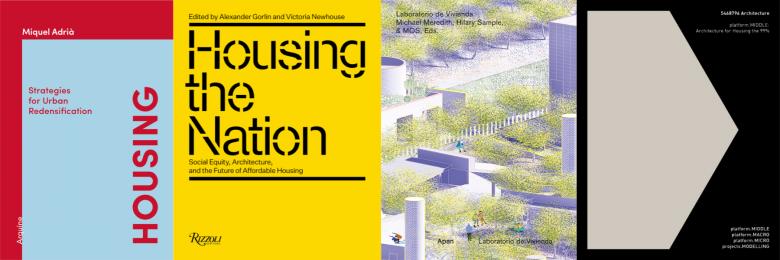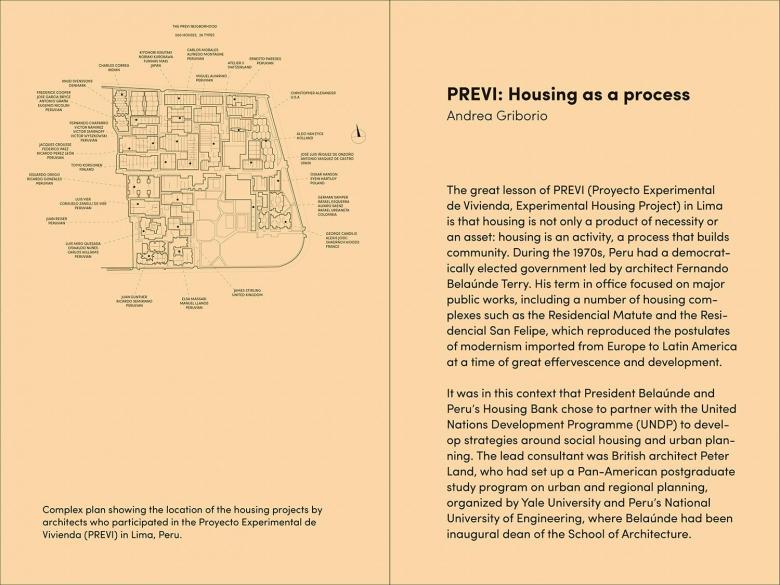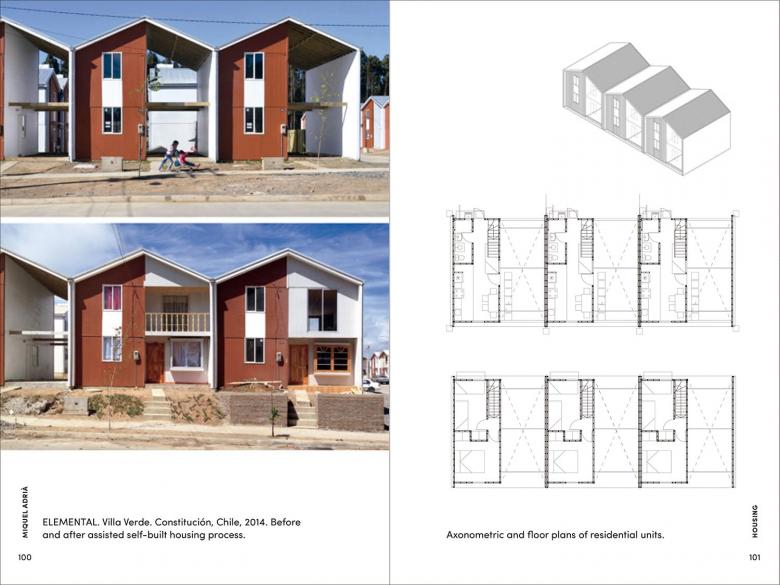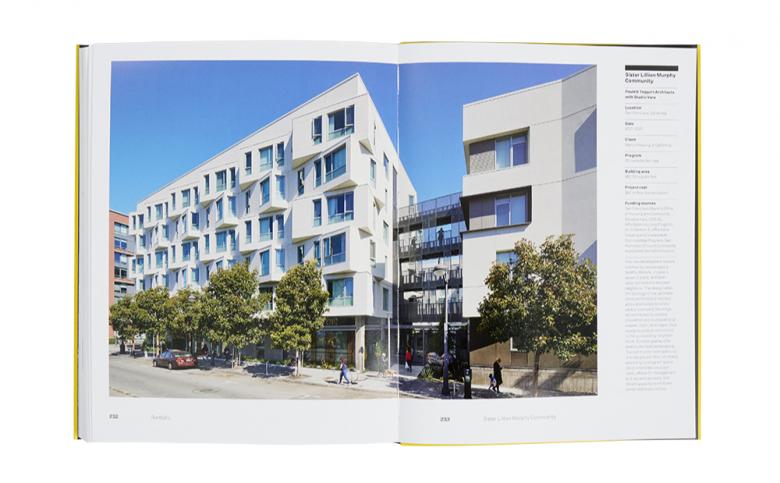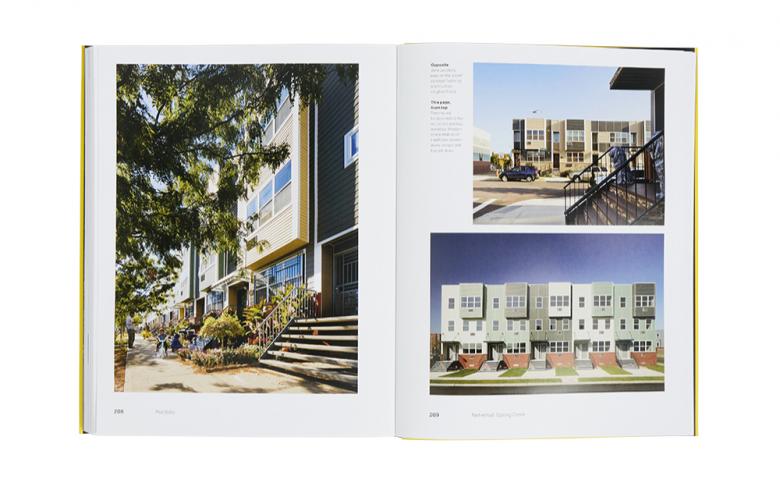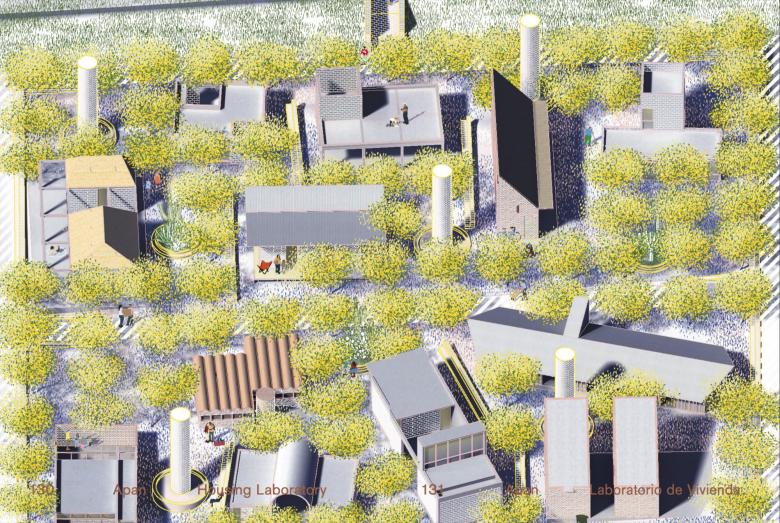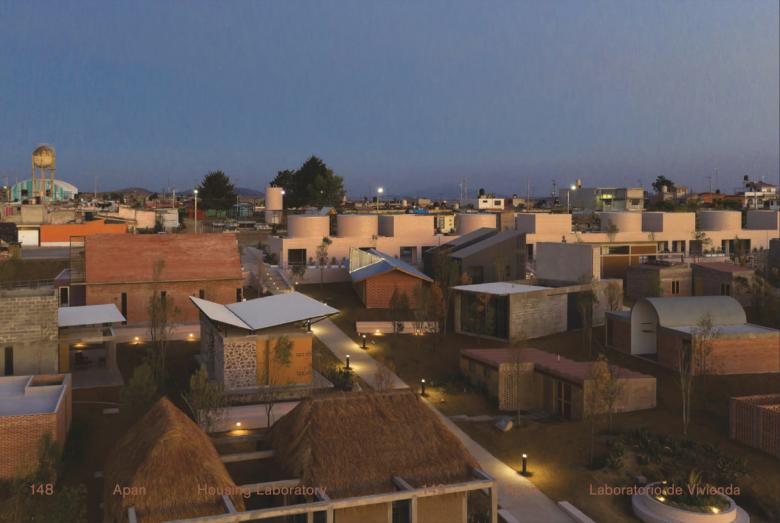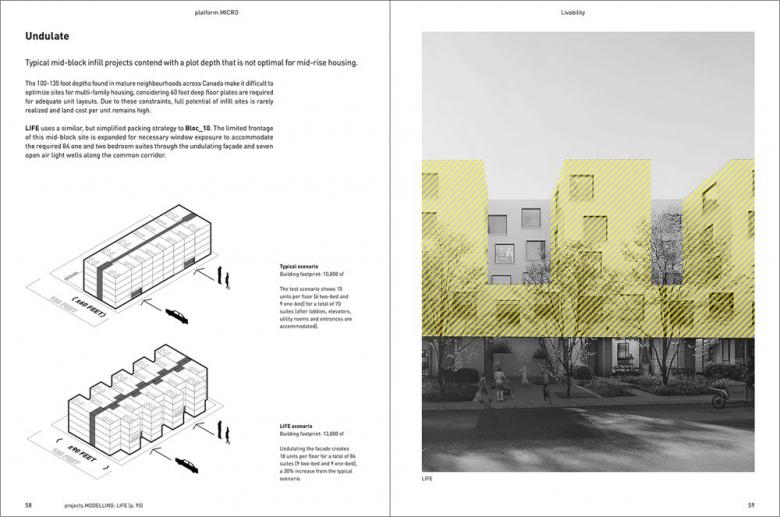World-Architects takes a look at four recently published books on housing in North America and Latin America: Housing: Strategies for Urban Redensification; Housing the Nation: Social Equity, Architecture, and the Future of Affordable Housing; Laboratorio de Vivienda / Housing Laboratory; and platform.MIDDLE: Architecture for Housing the 99%.
“There are plenty of books on housing.” So contends Reed Kroloff, dean of Illinois Institute of Technology’s College of Architecture, in the foreword to 5468796 Architecture's platform.MIDDLE, one of the latest additions to the “more than 50,000 titles” on housing that Kroloff found on Amazon. Even if we set aside for the moment how questionable Amazon is for gauging metrics on books, architectural or otherwise, the word plenty seems to indicate that there are enough books on the subject and no further research and publication is needed, as if architects today need only look at Roger Sherwood's Modern Housing Prototypes and other books from last century that documented canonical housing projects.
While there is hardly such a saturation of books on housing, the sheer number of books that fall into the “residential architecture” category on Amazon — ranging from interior design solutions and surveys of single-family houses to instructions on how to build a shipping container house and yet another book on Frank Lloyd Wright — point to the difficulty for books on multi-family housing to stand out from the crowd. Such a situation is more pronounced in the United States, Canada, and Mexico, where single-family housing gets the most attention.
This writer contends that climate change, economic inequality, dwindling resources, and other contemporary crises point to the need for more and better housing, especially affordable housing, social housing, and so-called “missing middle” housing. With architects ideally shifting their attention to multi-family housing and away from single-family houses for rich families with large properties, books on the typology of housing should therefore be in demand: surveys of quality precedents; critical takes on important issues; case studies of unique and important projects; and documentation of conferences on the topic. The four recently published and forthcoming books collected here set their sights on housing, with a focus on projects in North and Latin America this century:
- Housing: Strategies for Urban Redensification edited by Miquel Adrià
- Housing the Nation: Social Equity, Architecture, and the Future of Affordable Housing edited by Alexander Gorlin and Victoria Newhouse
- Laboratorio de Vivienda / Housing Laboratory edited by Michael Meredith, Hilary Sample, MOS
- platform.MIDDLE: Architecture for Housing the 99% by 5468796 Architecture
Housing
Miquel Adrià, architect and editor in chief of Arquine, is a strong proponent of density over sprawl, seeing the latter as a “failure” and arguing for better solutions for collective housing. Housing: Strategies for Urban Redensification wants to offer solutions, but it does so by looking to the past: presenting nine “proposals that changed the paradigm of collective housing over the course of the past century and up to the present day.” The nine case studies range from the Weissenhofsiedlung and Unité d'Habitation in Europe to PREVI and ELEMENTAL in South America; from adding density in Mexican suburbs in recent years to Lacaton and Vassal's award-winning transformations of public housing projects in France.
The most telling characteristic of Adrià's book is its size: At just over 4 x 6 inches, it is a book to carry around in your pocket, not one to sit on a coffee table. There are plenty of photographs and drawings, but it is a book of ideas — provocations from the past for rethinking housing today. Adrià collected case studies that add density, are typologically diverse, are transformable, and have other commendable aspects, but primarily their strategies had to be replicable. “We need to cultivate a storehouse of ideas and proposals,” he writes, “that are replicable on a large scale.” Housing is a good place to start.
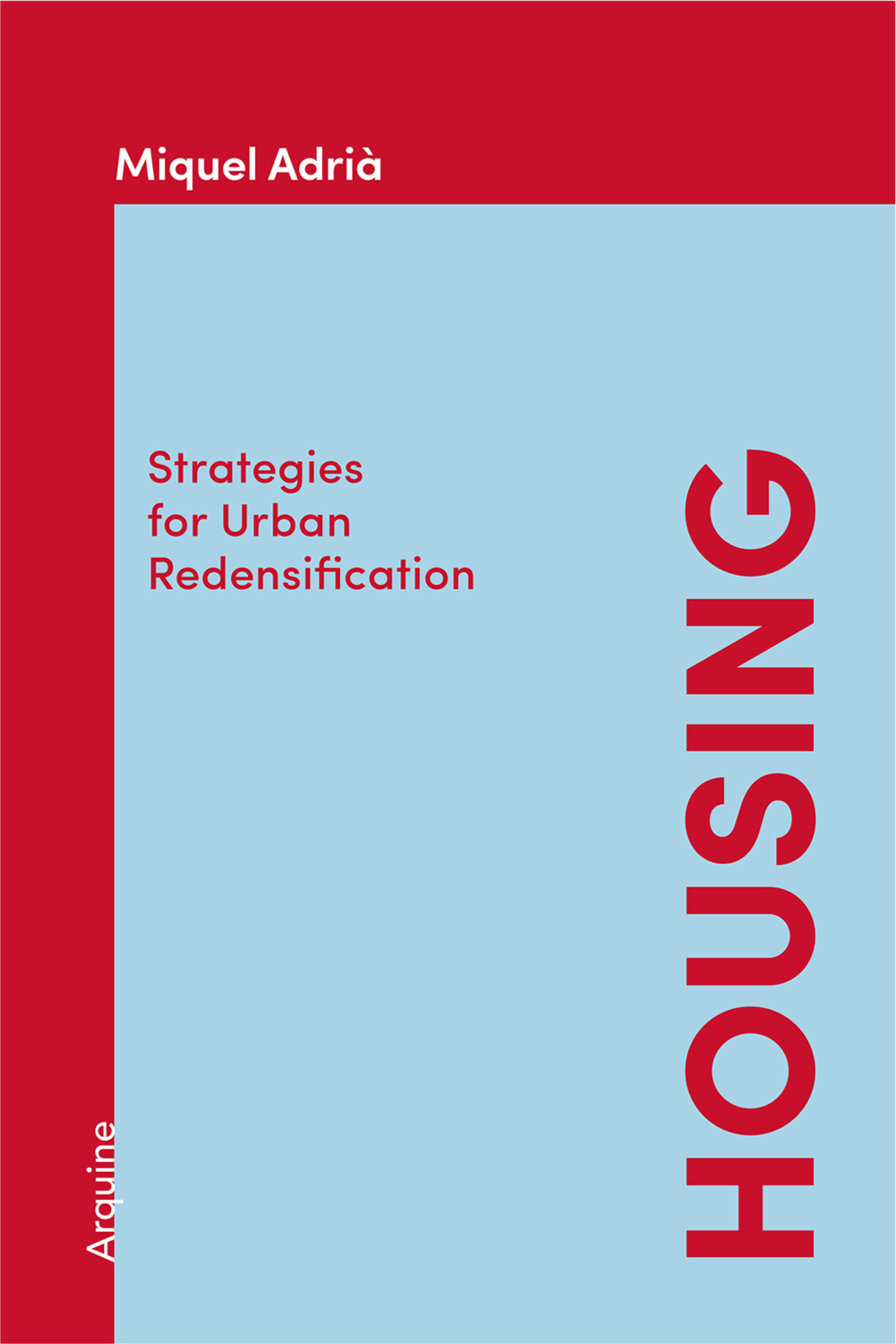
Housing: Strategies for Urban Redensification
Edited by Miquel Adrià
Foreword by Alejandro Aravena
4.5 x 6.5 inches
192 Pages
Paperback
ISBN 9786078880232
Arquine
Purchase this book
Housing the Nation
Housing the Nation: Social Equity, Architecture, and the Future of Affordable Housing is a collection of seventeen essays edited by Alexander Gorlin, a New York architect who has designed numerous multi-family housing projects, and Victoria Newhouse, an architectural historian who has written books about museums, concert halls, and landscapes. The essays are organized into four thematic chapters that move from general issues to specific solutions: “The Big Picture,” “Racial Injustice and Housing,” “Points of View,” “In Search of Solutions.” Following them is a fifth chapter that collects eighteen affordable-housing case studies, most of them built and quite a few of them in New York and California, the two coastal US contexts that have traditionally been forced to address affordable housing more than others.
With its five chapters and mix of essays and projects, Housing the Nation commendably blends critical takes on issues pertinent to housing with what Gorlin describes as “beautiful, dignified, and well-designed” projects. Contributors to the former include architects and developers, but also economists, lawyers, community organizers, and others involved with the creation of affordable housing. It's hard not to agree with Gorlin's descriptors of the latter projects, which include a few of his firm's own buildings but also ones designed by Michael Maltzan, Brooks + Scarpa, Rural Studio, and Koning Eizenberg, among others. It's a timely and important book that US architects who want to tackle affordable housing should consult.
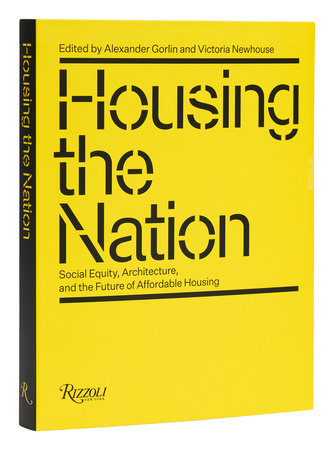
Housing the Nation: Social Equity, Architecture, and the Future of Affordable Housing
Edited by Alexander Gorlin and Victoria Newhouse
7.25 x 9.25 inches
240 Pages
Flexibound
ISBN 9780847873982
Rizzoli
Purchase this book
Laboratorio de Vivienda
MOS, the New York studio of Michael Meredith and Hilary Sample, is a prolific producer of publications, be they monographs, books accompanying exhibitions, or even children's books. A few large-format hardcover books appear to be comprising a series within their larger printed oeuvre: It started with A Situation Constructed from Loose and Overlapping Social and Architectural Aggregates in 2016, continued with A Book on Making a Petite École from 2022, and resumes with Laboratorio de Vivienda / Housing Laboratory. The last, published this year, documents the eponymous laboratory consisting of 32 prototypical low-income houses on a rectangular block in Apan, in Hidalgo, Mexico. The project was master planned by MOS, who also designed a welcome center, and was backed by INFONAVIT (Mexican federal institute for worker's housing) and the Center for Research for Sustainable Development (CIDS).
Each of the prototypical houses was designed by different architects to respond to one of Mexico's nine climatic zones, though they appear randomly strewn across the rectangular site and numbered 1 to 32. They are described in the book in numerical order, first in basic drawings accompanied by the architects' words and the words of MOS; then in terms of the vernacular “references” the architects employed to root the prototypes in “the majority of the built world that Architecture glosses over,” per the authors. (Only Rojkind Arquitectos, a “firm focused on the design and development of innovative tactics,” declined to provide a reference.) Following the texts, MOS's cartoonish drawings akin to their children's book show the assemblage as a neighborhood, and then photographs finally show the laboratory as built — a showroom of full-scale architectural solutions ready for replication.

Laboratorio de Vivienda
Edited by Michael Meredith, Hilary Sample, MOS
English/Spanish
9.5 x 12.75 inches
200 Pages
Hardcover
ISBN 9781638401124
Actar Publishers
Purchase this book
platform.MIDDLE
platform.MIDDLE: Architecture for Housing the 99% is an ambitious four-volume publication that came out of the “platform.MIDDLE” symposium that took place at IIT’s College of Architecture on April 12 and 13, 2019, and was organized by Winnipeg's 5468796 Architecture (often shortened to just 546). The symposium, which explored the current state of multi-family housing in North America and the architect’s role in shaping its future, is documented in the eponymous first volume through transcripts of the keynotes and the presentation of a handful of case studies. At just over 200 pages, platform.MIDDLE is the longest of the four volumes and is followed by the slimmest: platform.MACRO, a 56-page document on “the larger scale of housing production that falls outside the traditional scope of the architect alone.” Issues include affordable housing, land use policy, the commodification of housing, and formal strategies for housing.
The other two volumes — platform.MICRO and platform.MODELLING — are monographic, presenting 546's work around housing in two ways. MICRO primarily offers a “toolkit” of strategies that the firm has developed since it was founded in 2007. These include the creation of in-between spaces, such as courtyards and passages, and the implementation of modularity and low-cost cladding to bring down costs. The projects in MICRO reappear in MODELLING, a presentation of twenty of 546's multi-family projects in a structured format with consistent drawings and data visualizations. These illustrations echo their sensible approaches to the finance, construction, and politics of housing, while the photographs and renderings convey their creativity and talent as architects. After all, the best housing will ultimately balance practicality and imagination.
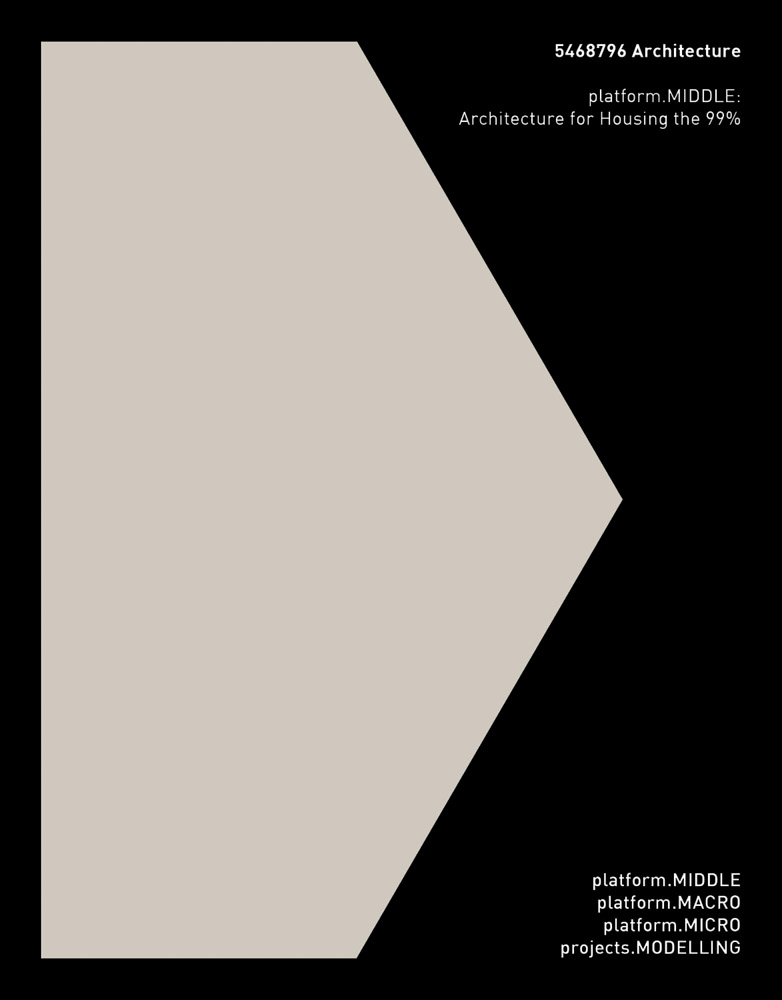
platform.MIDDLE: Architecture for Housing the 99%
5468796 Architecture
7.25 x 10 inches
560 Pages
830 Illustrations
4-volume paperback w/slipcase
ISBN 9786078880195
Arquine
Purchase this book
